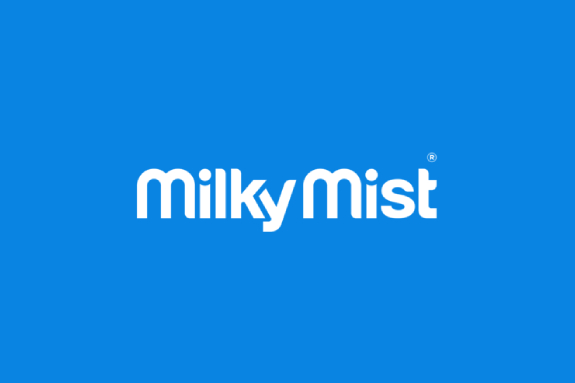This is the inspiring story of Satish Kumar, a 17-year-old who, with no money or brand value, turned his family’s small milk business into a 2,000-crore dairy empire, Milky Mist, in one of the most competitive industries. Despite the overwhelming presence of giants like Amul, Satish built a thriving business in the Indian dairy market—a space with thin margins and high perishability.
The Challenges of the Dairy Industry
To understand Satish’s success, we need to look at the complex nature of the dairy industry in India. Here are three major challenges:
- Short Shelf Life: Milk has a shelf life of only 2 days, making logistics crucial. Unsold milk quickly turns into a loss.
- Low Margins: Profit margins in the milk business are as low as 3-5%. Without adding value, the business becomes unsustainable.
- High Competition: Dominated by well-established brands like Amul, it was difficult for small players to compete.
Despite these challenges, Satish identified opportunities that allowed him to grow his business steadily. His key to success was value addition—a crucial business strategy that would eventually transform his company.
The Game-Changer: Value Addition
The first pivotal move that Milky Mist made was to escape the commoditization of milk through value addition. Value addition refers to the process of transforming a basic product into a more valuable, premium version, thus allowing a company to charge higher prices and increase its profit margins.
Here’s how this works:
- Raw Rice Example: Selling raw rice might give you a 30% margin. However, turning that rice into something like idli batter or idli increases the value dramatically, and the profit margins can skyrocket from 30% to as much as 78%. You’re still using the same raw ingredient but adding value by processing and preparing it.
Milky Mist applied this principle to milk: Instead of just selling milk, they began producing paneer, ghee, curd, and other value-added products. This move increased their margins significantly—from around 5% with milk to over 20% with paneer, curd, and ghee.
Capitalizing on Market Gaps
While value addition set the foundation, Satish’s next challenge was the fragmented nature of the dairy industry in India. Milk procurement in India is extremely fragmented, with over 7.5 lakh small dairy farmers, each owning just a few cows. This posed three problems for Satish:
- Inconsistent Supply: Farmers could switch suppliers overnight if they got better prices elsewhere.
- Inconsistent Quality: Variability in feed and cattle care meant inconsistent milk quality.
- Logistics: Lack of refrigeration and efficient transport could cause spoilage.
Satish tackled these problems through innovative solutions:
- Winning Farmer Loyalty: Instead of trying to tie farmers down with contracts (which was taboo at the time), Milky Mist solved critical problems for the farmers. They facilitated loans through banks, provided 24/7 veterinary support for cattle health, and even distributed high-quality cattle feed at zero profit. These services built trust with farmers, ensuring a reliable and loyal supply chain.
- Technology and Cold Chain Development: Satish built a cold storage logistics network, including refrigerated trucks and chillers at retail stores. This investment ensured the consistent quality and longevity of their products, even as they expanded their distribution.
Cracking the Market
The early success of Milky Mist came from selling high-quality paneer to five-star hotels. These hotels needed paneer that met strict standards, particularly in terms of temperature and consistency. Milky Mist excelled in meeting these requirements, securing a foothold in this premium market.
However, five-star hotels represented only a small fraction of the potential market. To scale the business further, Satish knew that Milky Mist would need to reach mass retail outlets. But this introduced two new challenges:
- Lack of Refrigeration at Retailers: Many kirana (small retail) stores didn’t have refrigeration, which limited the shelf life of paneer to just a couple of days.
- Logistics Challenges: Ensuring that paneer stayed fresh during transport was another major hurdle.
To overcome this, Milky Mist distributed 20,000 chillers to kirana stores to store their products. This not only solved the refrigeration issue but also allowed retailers to store paneer for longer periods, reducing waste. Additionally, they invested in refrigerated trucks to keep products cool during transport.
A Revolution in Logistics
Another critical piece of the puzzle was logistics. While investing in trucks ensured quality during transport, it also raised the question of efficiency. What would happen to the trucks on their return journey? An empty truck on the return trip would effectively double transportation costs.
Milky Mist’s solution was both simple and brilliant: they established a return logistics system. For example, if a truck delivered dairy products to the north, it would pick up local produce (such as apples from Kashmir) on the return trip, maximizing efficiency and even creating new revenue streams.
Key Lessons from Milky Mist’s Success
Satish Kumar’s journey with Milky Mist offers several valuable lessons for entrepreneurs, especially those in competitive or low-margin industries.
- Value Addition is Key: In a commoditized market, like milk, simply competing on price leads to a race to the bottom. Adding value by transforming a commodity into a premium product allows companies to escape price wars and achieve much higher profit margins. Whether it’s paneer, ghee, or other dairy products, Milky Mist demonstrated how adding value can revolutionize a business.
- Long-Term Partner Loyalty Matters: Great businesses don’t just extract value from their partners; they also deliver value to them. By solving critical problems for farmers—such as access to loans and veterinary care—Milky Mist secured a loyal and reliable supply chain. This principle of conscious capitalism—helping your partners grow while growing yourself—is a key takeaway.
- Don’t Outsource Critical Operations: While outsourcing logistics or other operations may save upfront costs, it can compromise quality and control. For Milky Mist, building its own cold storage logistics chain ensured they could maintain the freshness and quality of their products—something that’s crucial in the dairy industry. This is a powerful reminder that quality control should never be sacrificed for convenience.
- Efficient Use of Resources: Milky Mist optimized logistics with its innovative return logistics system, reducing costs and creating an additional revenue stream. Always look for ways to make every part of your operation more efficient.
Conclusion
Satish Kumar’s Milky Mist story is one of relentless innovation, resourcefulness, and a deep understanding of market gaps. From focusing on value addition to solving critical issues for dairy farmers and retailers, Satish built a brand that now stands among giants. His journey offers timeless lessons on how to carve out a niche in a competitive market, ensuring quality and sustainability along the way.
The next time you see a Milky Mist product on the shelf, remember that it’s not just a packet of paneer or curd—it’s the result of a young boy’s vision, resilience, and smart business strategies.


Leave a Reply